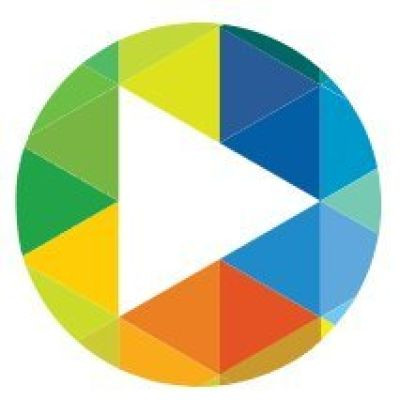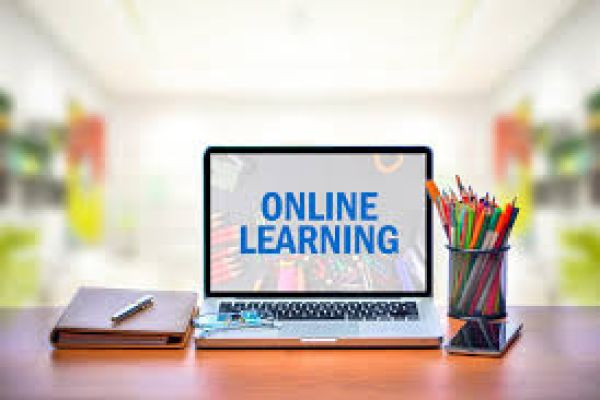Introduction: The Transformation of Teacher Growth
Today, a profound shift is underway, driven by the maturity and sophistication of digital platforms. Online learning has moved from a novelty to the default mode of professional growth, creating a highly flexible, deeply personalized, and immensely powerful ecosystem for educators. The platforms are no longer merely repositories for static videos; they are dynamic, interactive environments designed for adult learning and immediate classroom application.
For a resource like TeacherFlix, dedicated to providing high-quality, on-demand content, understanding this shift is crucial. This article explores the full landscape of online professional learning: why it has become the essential tool for today’s educator, the core benefits it provides, the principles of effective online course design, and how teachers can best harness its power to maximize their impact in the classroom.
I. The Imperative for Flexibility: Why Online PD is the New Standard
The traditional professional development model faced systemic challenges that the digital format inherently solves. The core of this solution is flexibility and accessibility.
A. Breaking the Barriers of Time and Place
The teacher’s schedule is notoriously packed, making long blocks of dedicated PD time difficult to schedule. Online learning sidesteps this conflict entirely.
Anytime, Any Pace (Asynchronous Learning): The greatest strength of online PD is the ability to engage with content asynchronously. Teachers can work through modules during their planning period, after school, or on a Saturday morning. This is not just about convenience; it respects the individual’s learning rhythm. A teacher grappling with a new coding curriculum can spend extra time reviewing the technical modules, while one refreshing their classroom management skills can move quickly through familiar content. This self-pacing is proven to increase engagement and knowledge retention.
Global Access to Expertise: Online platforms erase geography. A rural teacher is no longer limited to the expertise available in their district. They can learn directly from a leading urban pedagogical researcher, a curriculum specialist on the other side of the world, or a technology integrator in a neighboring state. This democratizes access to the highest-quality professional content.
The Power of Microlearning: Effective online courses are often delivered in "microlearning" segments—short, focused bursts of information, usually between three and ten minutes. This format aligns perfectly with the reality of a teacher’s fragmented day, allowing them to absorb a single, actionable skill or theory during a short break and immediately apply it.
B. Cost-Effectiveness and Sustainability
Professional development is a significant budget item for schools and districts. Online solutions offer a sustainable financial model.
Reduced Overhead: Eliminating costs associated with travel, physical venues, printed materials, and substitute teacher coverage translates into substantial savings. These savings can then be reinvested into expanding the quality and variety of the course offerings.
Always-On Resources: Once a school invests in a platform subscription or a course bundle, the materials are perpetually available. Teachers can revisit content for a refresher, making the knowledge a sustained resource rather than a one-time event that fades after a single seminar.
II. Maximizing Impact: The Core Benefits for the Classroom
Online professional learning is ultimately judged by its capacity to improve teacher effectiveness and, consequently, student outcomes. The structure of the digital environment provides several mechanisms for achieving this.
A. Deep Personalization and Targeted Skill-Building
General professional development sessions often leave teachers feeling that only a fraction of the content was relevant to their specific grade level, subject, or student population. Online learning excels at precision.
Individualized Learning Paths: Platforms can offer diagnostic assessments that guide teachers to courses addressing their most pressing needs, whether it's blended learning strategies, trauma-informed practices, or advanced data analysis. This is the essence of personalized professional growth.
Just-in-Time Learning: Imagine a teacher suddenly faced with a new student who is an English Language Learner (ELL). Instead of waiting months for the next workshop, the teacher can immediately enroll in an online course on scaffolding language acquisition, receiving the necessary skills the moment they are needed. This immediate responsiveness is invaluable in the fast-paced classroom environment.
Focus on Reflection and Application: Many online modules build in mandatory reflective assignments, requiring teachers to move beyond passive consumption. They must apply the new strategy to their own curriculum and share the results in a discussion forum, fundamentally linking learning to practice.
B. Fostering a Robust Professional Learning Community (PLC)
One of the common critiques of online learning is the perceived lack of human connection. However, modern platforms are masters at engineering high-quality interaction, creating richer and more diverse PLCs than traditional models.
The Power of Asynchronous Dialogue: In a face-to-face setting, a few dominant personalities can monopolize the discussion. Online discussion boards create a "level playing field", providing quiet and reflective individuals with the necessary time and space to articulate deeper, more thoughtful responses. The quality of written discourse often surpasses the spontaneity of oral discussion.
Global Peer Networks: A teacher in New England can collaborate on a project-based learning unit with a teacher in California, exchanging regional insights, resource ideas, and practical advice. This cross-pollination of ideas fosters innovation that is impossible within the confines of a single school building.
Sustained Peer Review and Feedback: Teachers can upload lesson plans, rubrics, or video clips of their teaching for anonymous or peer-reviewed feedback. This continuous, low-stakes exchange of professional work creates a powerful cycle of improvement.
III. The Art of Design: Principles for Creating Engaging Online Courses
For platforms like TeacherFlix, the pedagogical design of the courses is everything. A successful online course is not simply a recorded lecture; it’s an integrated, dynamic learning experience built on specific principles of adult learning.
A. The Three Pillars of Interaction
Research consistently shows that effective online learning must contain three critical forms of interaction:
Student-Content Interaction: This is the foundational element, involving the learner actively engaging with the information. This means the content must be delivered in multiple, accessible formats: video, interactive text, podcasts, and simulations.
Student-Instructor Interaction: The instructor's role shifts from "sage on the stage" to "guide on the side." This involves providing timely, constructive feedback, facilitating discussions, and holding virtual office hours to maintain a sense of presence and accountability.
Student-Student Interaction: This is the community component, essential for collaborative learning. Designing small-group projects, peer-review assignments, and case study analyses that require joint effort ensures learners teach each other, solidifying comprehension.
B. Leveraging Multimedia and Interactivity
In the digital realm, engaging the learner requires a multi-sensory approach that capitalizes on the technology.
Interactive Video: Videos should be brief and often interspersed with embedded quizzes, polls, or reflective prompts that require the learner to pause and respond. This prevents passive viewing and ensures active processing of the information.
Scenario-Based Learning: Instead of theoretical concepts, the course should present realistic teaching dilemmas or classroom scenarios. Learners must then apply the learned theory to solve the problem, simulating the decision-making process required in the classroom.
Gamification Elements: Incorporating elements like badges, progress bars, leaderboards, and "mastery checks" taps into intrinsic motivation. The achievement of a “mini-win” after completing a challenging module reinforces the learning and encourages the teacher to continue the course.
C. Backward Design and Clear Alignment
The most effective courses use a backward design model, ensuring every component serves a larger purpose.
Starting with the Outcome: The course designer must first define the desired skills or competencies a teacher should possess at the end. For example, not just "understand differentiated instruction," but "be able to create three different scaffolding options for a common core standard."
Aligning Assessment and Content: Every piece of content (reading, video, or activity) must directly support the final, performance-based assessment. This prevents the course from feeling cluttered with irrelevant information and ensures that the teacher's time is focused on acquiring high-leverage skills.
IV. The Teacher’s Playbook: Strategies for Maximizing Online Learning
The success of online professional development ultimately rests on the individual learner. The flexibility that makes it appealing also requires a high degree of self-regulation and intentionality. Here are essential strategies for teachers to get the most out of their online PD experience:
A. Cultivating Self-Discipline and Time Management
Without a fixed class time, it's easy to procrastinate. Treat the online course with the same respect as a required in-person commitment.
Schedule Non-Negotiable Time: Block out specific, realistic time slots in your week for course work—and stick to them. Don’t wait for "free time" to appear; it rarely does.
Define Your Learning Space: Create a dedicated, distraction-free environment for learning. Tell family members or colleagues that this is your professional learning time.
Use "Chunking" Strategies: If a module is 90 minutes long, break it into three 30-minute sessions over three days. This prevents burnout and aligns with the microlearning structure of effective courses.
B. Be an Active Digital Citizen
The best learning happens when you move from passive consumption to active contribution.
Engage in the Discussions: Don't just read the discussion posts; contribute to them. Ask follow-up questions, respectfully challenge a peer’s idea, or share a personal classroom anecdote that relates to the topic. Your unique perspective adds value to the community.
Focus on the “How,” Not Just the “What”: When engaging with content, don't just summarize the theory. Instead, constantly ask yourself: "How can I use this in my second-grade classroom next week?" and "What materials would I need to adapt this for my students?"
Utilize the Instructor: Take advantage of virtual office hours or one-on-one feedback opportunities. The instructor is a resource and a mentor; they can help tailor the course material to your unique teaching context.
C. Connect Online Learning to In-School Practice
The ultimate goal is to bridge the gap between theory (the online course) and practice (the classroom).
Form an Implementation Peer Group: Find one or two colleagues in your school or district who are taking similar PD. Meet briefly each week to discuss how you are implementing the new strategies, celebrating successes and troubleshooting challenges together.
Maintain a Digital Professional Portfolio: Use a tool like a private blog, a dedicated folder on your computer, or a Google Doc to compile your notes, reflections, and artifacts (lesson plans, student work samples) from the course. This portfolio becomes a dynamic, measurable record of your professional growth, ready for a performance review.
V. The Future is Blended: Integrating Digital and In-Person Growth
While online learning offers unparalleled flexibility, the future of professional development is likely blended. The most powerful model combines the efficiency and accessibility of digital modules with the immediate human connection and coaching of in-person interactions.
Imagine a model where a district utilizes TeacherFlix:
Digital Foundation: Teachers complete a self-paced, online module on culturally responsive teaching. They gain the core knowledge and theory.
In-Person Application: They then meet in small, grade-level groups with an instructional coach (in-person or via synchronous video) to review their implementation plans and participate in a guided peer-coaching session based on their reflections.
Continuous Digital Support: They return to the online platform for ongoing Q&A forums and access to an expert library of resources.
This blended approach captures the best of both worlds: the scale and flexibility of online learning, combined with the depth and accountability of high-quality human interaction.
Conclusion: Empowering the Lifelong Learner
Online courses and professional development are not just a technological upgrade; they represent a fundamental shift in how we value and support our educators. By prioritizing flexibility, personalization, and high-quality community-building, platforms like TeacherFlix are empowering teachers to take true ownership of their professional journey.
The modern educator is a lifelong learner, and the digital classroom is the most powerful resource available to sustain that growth. As technology continues to evolve, so too will the opportunities for personalized excellence, ensuring that the passion, skill, and knowledge of the world’s teachers are always at their absolute best. Embrace the digital shift, schedule your learning, and watch your impact multiply.









